Board Game Review: Orcs Must Die!
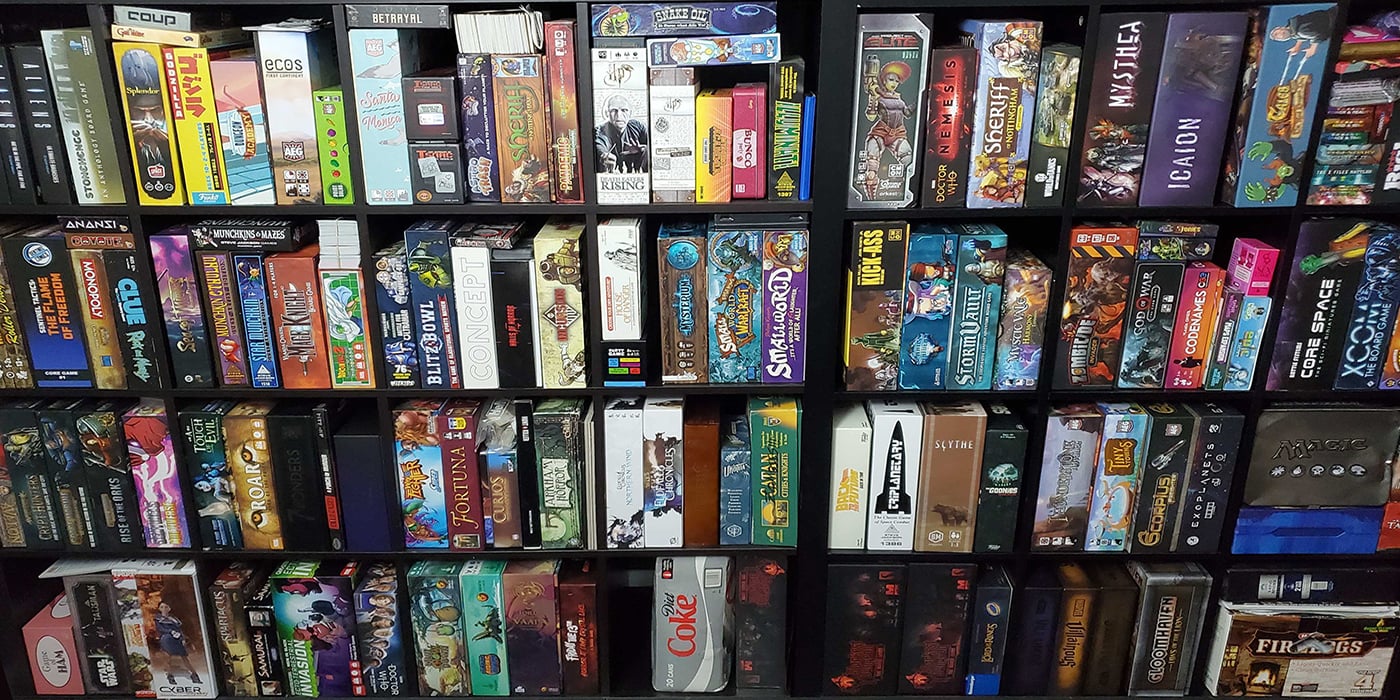

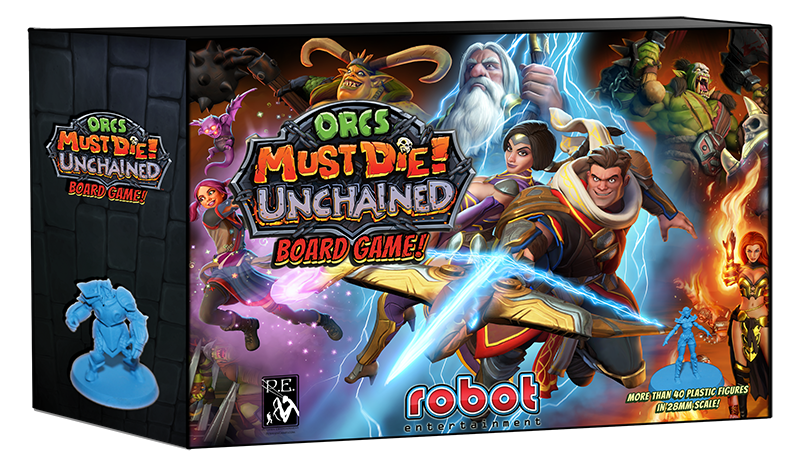 Let’s take a closer look at the latest board game from Petersen Games!
Let’s take a closer look at the latest board game from Petersen Games!
Disclaimer: I was sent a copy of Orcs Must Die! Unchained for the purpose of reviewing it.
Well, this is a feeling of déjà vu. My very first article for BoLS was an announcement for the Orcs Must Die! board game, which was about to hit Kickstarter at the time. Fast forward 2 years and this board game adaptation of the hit tower defense video game is finally about to receive a general retail release.
For the unaware, Orcs Must Die! is a popular action tower defense game on PC by Robot Entertainment. It’s had two games so far, with a third installment in development that brings the franchise into a more MOBA-like direction. The basic gist of the game is that you must defend your Rift from waves of orcs and other monsters by building an elaborate network of traps, some of which are designed to take advantage of environmental hazards like rivers of lava or acid pools.
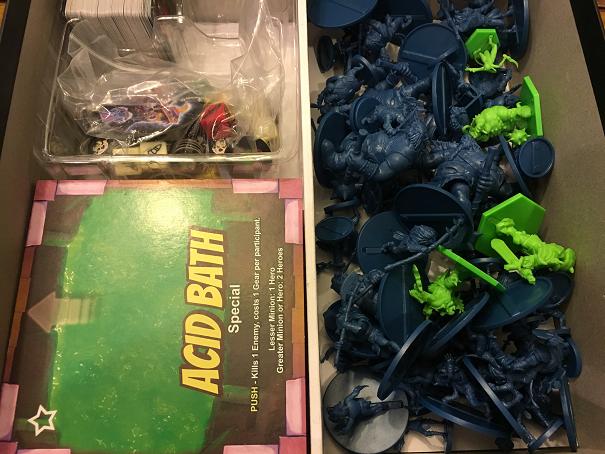
What sets the title apart from other tower defense games is that you also control a character like in a more traditional 3rd person action game. Your character can be equipped with a variety of special weapons and abilities in addition to your arsenal of traps. You’re given quite a bit of freedom in the way you tackle each level, and can focus on traps, direct action, or anything in-between.
Both of these aspects of the game are well represented in the board game version. Players start by selecting one of four characters and using their starting Skulls (money) to purchase traps and gear. Each character has a slot for their upgradeable weapon and three pieces of gear in the form of Trinkets, Rings, and Amulets. Each character also has a special ability and an Ultimate that can be recharged by spending Skulls between levels.
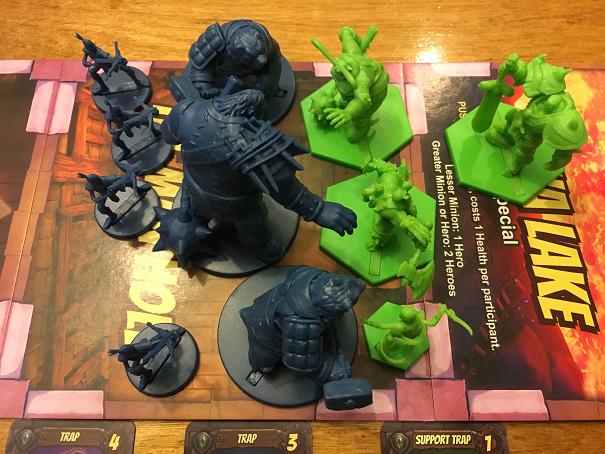
Despite the length of the rulebook, the Orcs Must Die! board game is extremely simple. You pick a map of varying difficulty and have to defend your Rift across three levels from waves of enemies. Each level has three waves of enemies, and between levels players have a chance to spend Skulls to buy new gear and traps.
That’s pretty much the whole game in a nutshell. Enemies advance through the map each turn, triggering any traps along the way, and players use their characters to intercept enemies that get past the traps. Each turn, players can use any combination of Move, Attack, Action, and various tile-specific abilities like Push, which can be used to kill enemies on lava or acid tiles. You can take as many of these actions as you want, so long as you don’t use each of them more than once.
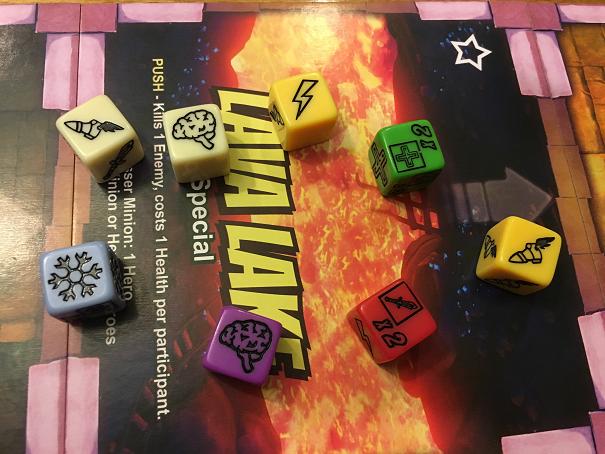
Combat comes in the form of rolling custom d6s with various symbols on them, the most common of which are Swords, Brains, and Boots. Enemies and heroes are vulnerable to specific symbols, and to attack you roll your dice pool and assign the results to enemies in your tile. Enemies don’t have health bars, so the only way to kill them is to roll the appropriate symbols during your attack and distribute them accordingly.
As you can imagine, this means that the game involves quite a bit of luck. The basic white dice aren’t very powerful, but there are other dice you can acquire via gear and upgraded weapons. These color-coded dice are generally geared towards fighting enemies with specific vulnerabilities. Red dice are loaded with Swords, purple dice are for Brains, and yellow dice are for Boots. You can also get green dice that are used to heal, and blue dice that have stun effects. You can combine two of the same symbol to generate a different symbol, which can help counteract the machinations of a wrathful dice god.
This is why my group quickly learned that strategic placement of traps is key in Orcs Must Die. Traps don’t roll dice, they just apply an effect. So if you have a trap that causes a Brain and Boot symbol when enemies enter the tile, you can potentially just outright kill two lesser minions on the early levels. Of course, enemies become more resilient and hit harder later on in the game, so you’ll need to make sure you are upgrading to better traps and gear to stand a chance.
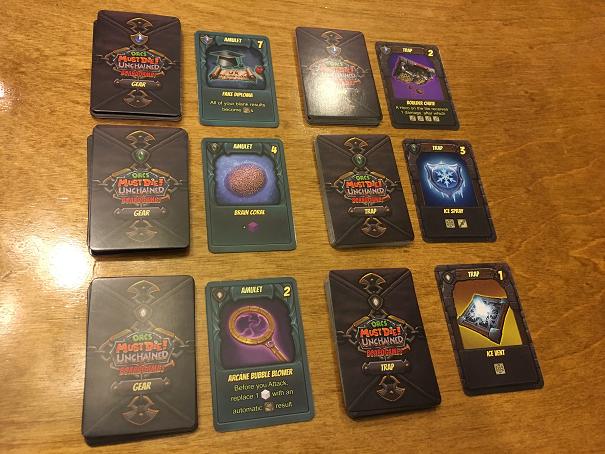
To a degree, I feel that enemies are a little too strong in the final level. At this point even the lowly lesser minions require two successful hits to kill, and the sheer number of enemies can get overwhelming. Even the starter maps can get pretty tough in the final waves, especially if the dice gods turn on you. Of course this could be chalked up to inexperience, but I imagine that the harder maps can be very challenging indeed.
The only truly major complaint I have is that the rulebook is full of typos and oddly worded sentences. Multiple times we found ourselves thinking that a specific rule seemed unintuitive or overly harsh until we realized that we misinterpreted what it said. The custom dice also aren’t the best, and several of them arrived with faded symbols. Beyond this, the components are all pretty high quality. The miniatures in particular are all pretty great, though you’ll need to remove some mold lines and fix some floppy polearms if you intend on painting and displaying them. Anyone who owns Cthulhu Wars should have a good idea of what to expect from Petersen’s miniatures.
Orcs Must Die! comes in two forms: Order and Unchained. These two versions are functionally identical in terms of gameplay, and even include the same rulebook. The difference is that the Order version has you play as the “good guys” fighting waves of orcs, while the Unchained edition lets you play as various orc and troll champions fighting waves of humans. Should you buy both versions you can play Rivalry, a 4v4 MOBA-esque mode where the players are trying to escort their minions to the enemy Rift. I only have the Unchained version, so I was unable to give this mode a shot. I may do another review covering Rivalry whenever I can get my hands on the Order edition.
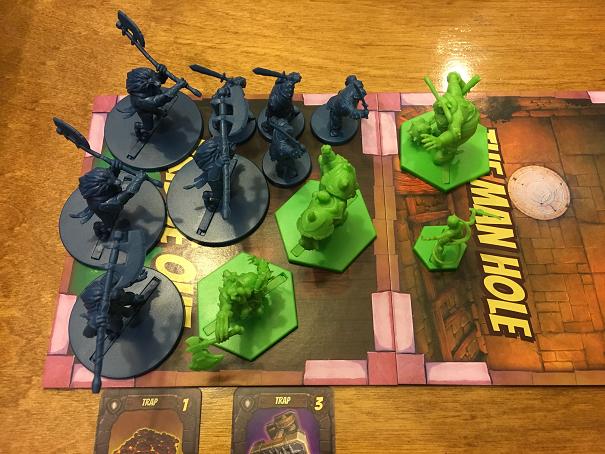
Overall, my group had quite a lot of fun with Orcs Must Die!, so much so that we plan on getting a copy of the Order edition and all the expansions. It’s very easy to pick up and understand, even with the typos and occasionally poorly-worded mechanic. If you want a fairly simple cooperative board game then you may want to check it out, just be aware that there is quite a bit of randomness involved. There’s a ton of replayability too, with a book full of maps covering 4 difficulty settings, a section to make your own maps, and the Rivalry mode if you buy both versions of the game. The two base games are $99 each, and there are a few expansions already for $29 a pop that add new heroes, minions, and bosses.
You can grab your copy on Petersen Games’ official website, or ask about it at your local game store.
~Did anyone here Kickstart the game? What do you think of it?


